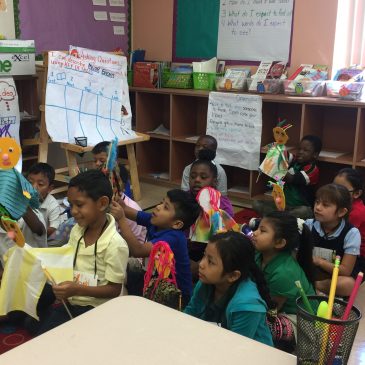Central Purposes of the Standards
“The central purposes of education standards are to identify the learning that we want for all of our students and to drive improvement in the system that delivers that learning. Standards, therefore, should embody the key concepts, processes, and traditions of study in each subject area, and articulate the aspirations of those invested in our schools—students, teachers, administrators, and the community at large. To realize that end goal, these new, voluntary National Core Arts Standards are framed by a definition of artistic literacy that includes philosophical foundations and lifelong goals, artistic processes and creative practices, anchor and performance standards that students should attain, and model cornerstone assessments by which they can be measured. The connective threads of this conceptual framework are designed to be understood by all stakeholders and, ultimately, to ensure success for both educators and students in the real world of the school.”
—National Core Arts Standards
What Are Performance Standards?
In the arts, Performance Standards are the central ideas we hold students accountable for…such as creating, presenting, responding and connecting. These ideas will guide students in organizing their work in the artistic disciplines of music, visual arts, theater and dance. Performance standards set the goal of the class work and evidence is how we measure the extent to which students meet that goal.
Example: 2nd Grade Visual Arts
2nd Grade
National Coalition Core Arts Standards
Performance Standards
| 2nd Grade NCCAS Arts Standards | Performance Standards | Evidence | No Evidence 1 | Limited Evidence 2 | Sufficient Evidence 3 | Strong Evidence 4 |
| Creating | Collaboratively brainstorm multiple approaches to an art or design problem. | Offers more than one way for approaching an art problem that addresses personal interests for creating art. | No Evidence 1 | Limited Evidence 2 | Sufficient Evidence 3 | Strong Evidence 4 |
| Experiment with various materials and tools to explore personal interests in a work of art or design. | Explores a limited range of materials and tools and makes selection in order to communicate topics of personal interest. | No Evidence 1 | Limited Evidence 2 | Sufficient Evidence 3 | Strong Evidence 4 | |
| Demonstrate safe procedures for using and cleaning art tools and equipment and studio spaces | Often demonstrates safe use and cleaning of art tools, equipment, and studio spaces | No Evidence 1 | Limited Evidence 2 | Sufficient Evidence 3 | Strong Evidence 4 | |
| Discuss and reflect with peers about choices made in creating artwork. | Articulates choices made regarding subject matter, materials, and tools and explains how these selections reflect personal interests. | No Evidence 1 | Limited Evidence 2 | Sufficient Evidence 3 | Strong Evidence 4 | |
| Presenting | Categorize artwork based on a theme or concept for an exhibit. | Categorizes artworks according to a theme or concept and provides rationale for grouping. | No Evidence 1 | Limited Evidence 2 | Sufficient Evidence 3 | Strong Evidence 4 |
| Responding | Categorize art work based on expressive qualities. | Categorizes artworks according to mood or feelings and provides rationale for grouping. | No Evidence 1 | Limited Evidence 2 | Sufficient Evidence 3 | Strong Evidence 4 |
| Interpret art by identifying the mood or feeling expressed and give reasons for their interpretation. | Interprets the overall mood of an artwork and makes partial connections to how the artist incorporates subject matter and other details to suggest the mood. | No Evidence 1 | Limited Evidence 2 | Sufficient Evidence 3 | Strong Evidence 4 | |
| Connecting | Compare and contrast cultural uses of artworks from different times and places. | Compares and contrasts details in selfportraits from different times or places and explains how these details help reveal information about the artist and the artist’s life. | No Evidence 1 | Limited Evidence 2 | Sufficient Evidence 3 | Strong Evidence 4 |
| Create works of art about events in home, school, or community life. | Creates a work of art that communicates to some degree about personal interests and/or experiences. | No Evidence 1 | Limited Evidence 2 | Sufficient Evidence 3 | Strong Evidence 4 | |
| Totals |




